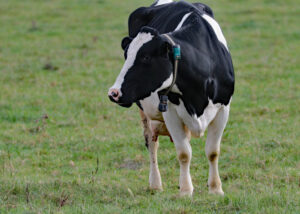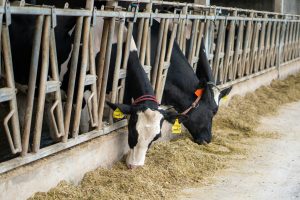Lucas Pantaleon
Bovine respiratory disease (BRD) is a leading cause of death in preweaned dairy calves in the US and worldwide. This challenge to the dairy industry could be reduced through the implementation of management practices aimed to preventing the disease. Failure of passive transfer (FPT), due to the lack of ingestion of good quality colostrum during the first hours after birth, is a leading risk factor for increasing calf mortality.
However, the relationship between FPT and BRD is less clear with some studies revealing associations between serum IgG levels and pneumonia, whilst other showed lack of association. Other practices such as longer duration of stay for newborn calf in the calving pen, housing in groups and different milk management practices, have been associated with preweaning mortality. Locations where harsh winters, requiring indoor housing of calves, have been associated with elevated mortality. On the other hand the effect of environments with mild winters and arid conditions, has not been extensible studied.
The study discussed here was set out to understand management factors associated with mortality and risk of mortality caused by BRD in California, an arid – mild winter environment. More specifically this study aimed to evaluate the associations between mortality and dam and calf management intervention practices that could prevent calf mortality. The study population consisted of 11,470 calves (68.5% female and 31.5% males) from 5 dairies distributed throughout California that were followed from birth to weaning.
The current study found that the overall preweaned mortality rate was 2.8% and that the BRD-specific mortality rate was 2.3%. The overall percentage of BRD-caused mortality was 19.3%. These findings were similar to other studies. The lower case fatality rate in this study, compared to prior research, could be attributed to specific management practices in California. Some of these management practices were, dedicated calf caretakers which is common in large California dairies and year around outdoor housing due to mild climate.
Mortality, either due to BRD or other causes, was lower in calves born from vaccinated cows with a modified live vaccine. It was speculated that vaccinated dams have a protective effect against mortality in pre-weaned calves through transfer of passive immunity to the calf by appropriate ingestion of good quality colostrum.
Season appeared to have an effect on BRD diagnosis and mortality. Calves that were born in the spring had a higher risk for developing or dying from BRD compared to ones born in the summer months. It was hypothesized that high day and low night temperatures (as spring and fall) stress the calves’ immune system as they need more energy for thermoregulation. The increased energy requirements during heat stress leads to energy deficits, poor thermoregulation and higher mortality. This suggests that in temperate climates, producers might need to heighten BRD preventative measures during seasonal changes in temperatures (spring and fall).
Passive transfer of immunity via ingestion of good quality colostrum during the first few hours of life is essential for calf management programs, because failure of passive transfer leads to calf illness and death. Furthermore, lack of adequate nutrition (milk intake) in calves may play an important role in increasing preweaned mortality. This study found a negative correlation between volume of milk fed and all-cause mortality in calves older than 21 days. Another study reported that calves fed less than 0.16 versus more than 0.21 kg of fat/day in preweaning liquid diets had 3 times greater odds of death.
As others have shown, this research revealed that twins had a greater risk of mortality compared to singleton calves. The likely explanation for these findings is the fact that twins compete for nutrients in utero, hence resulting in decreased vigor and health after birth. Taking into consideration these findings, caretakers should closely monitor twin calves during the preweaning stage for any signs of disease.
Increased maternity pen cleaning (changing bedding) was associated with lower risk for BRD-caused mortality, because concentration of pathogenic microorganism decreases and exposure of calves around birth is less after changing bedding.
At the dairy, judicious use of antibiotics is a key responsibility for managers and veterinarians in order to minimize the emergence of bacterial resistance. Prevention of infectious diseases such as BRD is an important aspect of judicious antibiotic use, since it would lower the number of sick animals as well as the need to treat. Hence studies such as the one discussed here are critical for identifying management practices that would improve herd health, animal welfare and decrease the need to administer antibiotics. Practices such as dam vaccination, ingestion of good quality colostrum, proper nutrition and cleanness can decrease the number of sick animals.
Reference
S. A. Dubrovsky, A. L. Van Eenennaam, B. M. Karle, P. V. Rossitto, T. W. Lehenbauer, and S. S. Aly. 2019. Bovine respiratory disease (BRD) cause-specific and overall mortality in preweaned calves on California dairies: The BRD 10K study.











